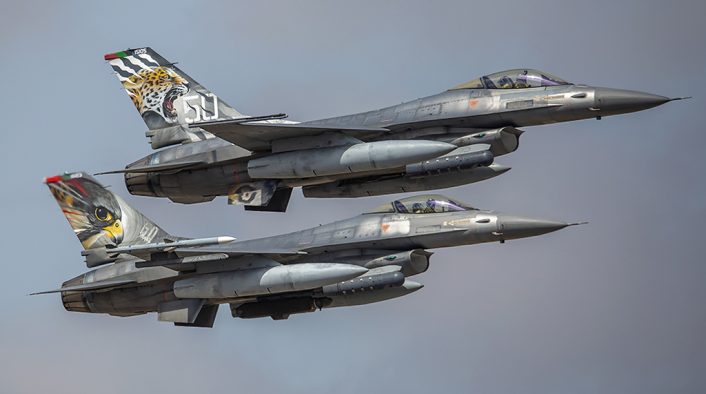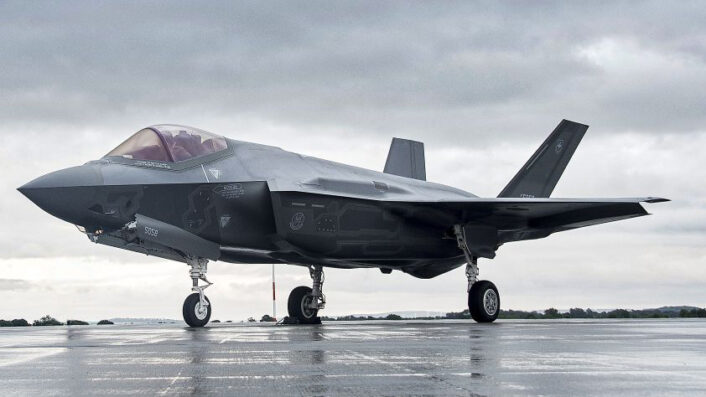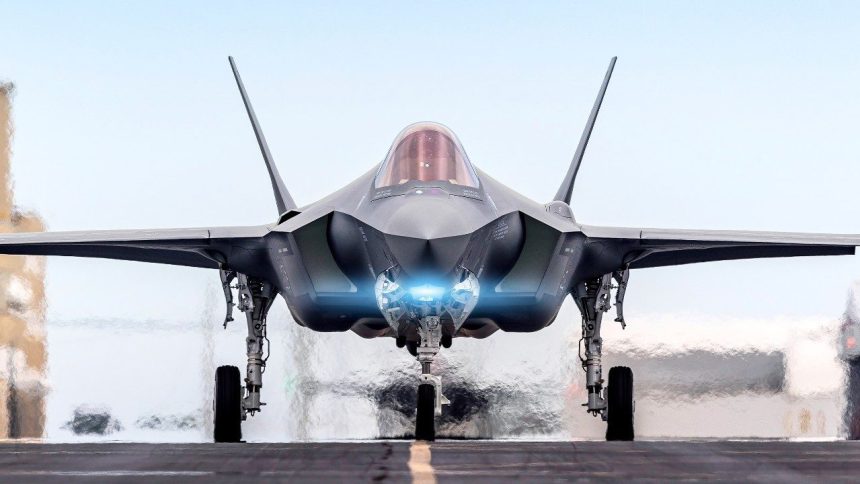The Portuguese Air Force will eventually replace the F-16s with the F-35.
In a long interview with Portuguese newspaper Diário de Notícias published on Apr. 12, 2024, the Portuguese Air Force Chief of Staff, General João Cartaxo Alves, provided some interesting details about the plan of the Força Aérea Portuguesa to replace the F-16 with the Lockheed Martin F-35 Lightning II aircraft.
Gen. Cartaxo Alves stated that the decision is aimed at keeping in line with the majority of European allies who have already begun transitioning to the F-35, as part of their strategic efforts.

The significant update about the 5th generation aircraft came as the PoAF Chief of Staff responded to various questions including some about the training of the Ukrainian pilots to prepare them for the F-16:
Question: Any progress in the process of helping to train Ukrainian pilots for F-16s?
Yes. It was a process that began in July last year. We immediately made available an instructor pilot, several maintenance technicians and some mission planning instructors.
But the situation was evolving in November last year, two training centers were created for Ukrainian pilots. One in Denmark and one in the Netherlands. This is based on two countries that would give their F-16s to Ukraine. And here there was an issue that had to do with legality and the legal issue.
We have instructors on planes from another country training a third country. And then it was agreed between the countries for a while that the Belgians would provide planes and that they would also do their training on their planes.
The Norwegians, the Danes, therefore, all their instructors in the planes that these countries themselves would provide. And, therefore, this pilot training began to be carried out by these countries that were aircraft donors.
Q: Because we are not aircraft donors.
We are not donors of F-16 aircraft. Because these countries transitioned from the F-16 to the F-35. We haven’t yet. We had 40 F-16s and we trained Romania, to whom we sold 12 of our aircraft. The 28 we have are the ones we need to fulfil the commitments we have. And we cannot give them up until we make this transition to the F-35.
Q: So are we exempt from the F-16 process?
For the pilots, yes, but we are not exempt from training. We will train in other areas that are also important for this capacity. We will receive air controllers for the F-16 in May. We will train them in Monte Real and at the OTA base.
We will welcome Ukrainian observers to our exercises that have the participation of many NATO nations. We will train infrastructure technicians, particularly in the specific capacity of F-16 retention and braking barriers, so that they can then carry out the operation.
And we will also continually receive, in a process that will begin in May of this year until March 2025, F-16 maintenance technicians that we will train in our military technician training schools.
Assessing the status of the F-16 fleet, Cartaxo Alves said:
At this moment our F-16s are the same as those that the Netherlands, Denmark, Belgium and the Netherlands had. What is going on? We are obviously reaching a point where they have been operating in the Air Force for 30 years, right? Are we going to follow the same path as other countries?
We have to replace it, because even if this decision is made now, the first aircraft will only arrive in seven years. They will fly for 40 years. Of course, we can say that we have the conditions and are in a position to also participate in this effort, if necessary.
Now, it is clear that there are components and equipment of the F-16 that will have to continue to be improved over time. It’s normal, because obsolescence is also continuous, just as the modernization of equipment is continuous.
Talking about the future, Gen. João Cartaxo Alves said transitioning to the F-35 is crucial for the PoAF. “It is something that is happening, but it is not done in one day. This process has already begun. We had a workshop here with Lockheed and the U.S. Air Force to also learn what this leap to the fifth generation is.”
The Chief of the Portuguese Air Force also added that the transition to a new fighter aircraft will span approximately two decades, with an estimated expenditure of 5.5 billion Euro allocated for this program and the first aircraft delivered from the seventh year onwards.

What happened last year
At the end of 2023, the Portuguese Air Force Chief of Staff had already stated that the F-35 was a suitable replacement for its F-16 fleet at a conference on military airlift and refueling in Lisbon.
However, his statement was clarified by the Portuguese government, which highlighted that the Portuguese Ministry of Defense had no plans to pursue the acquisition of the 5th generation aircraft. “This is a vision for the future, so currently, there is no process for purchasing aircraft to replace the F-16,” said Portuguese Defense Ministry spokesperson Helena Carreiras to Breaking Defense in a statement.
Remarkably, there was no reference to an F-35 procurement or F-16 replacement effort in Portugal’s Military Programming Law (LPM) proposal approved in March 2023. The LPM, that set out major defense acquisitions and long-term national defense spending, allocated spending of 5.5 billion Euro (6 billion USD) – the same budget allocated to the F-35 alone according Alves – over a period of 10 years, prioritizing eight major acquisitions, including the KC-390, a new Close Air Support aircraft, Cyber Defense, Support, Protection and Evacuation Helicopters and more.
While the F-35 was not mentioned in the LPM, the recent interview of the Portuguese Air Force Chief clearly confirms Portugal is about to join the long list of nations that have selected the Lighting II to replace their ageing fleet of F-16s.









